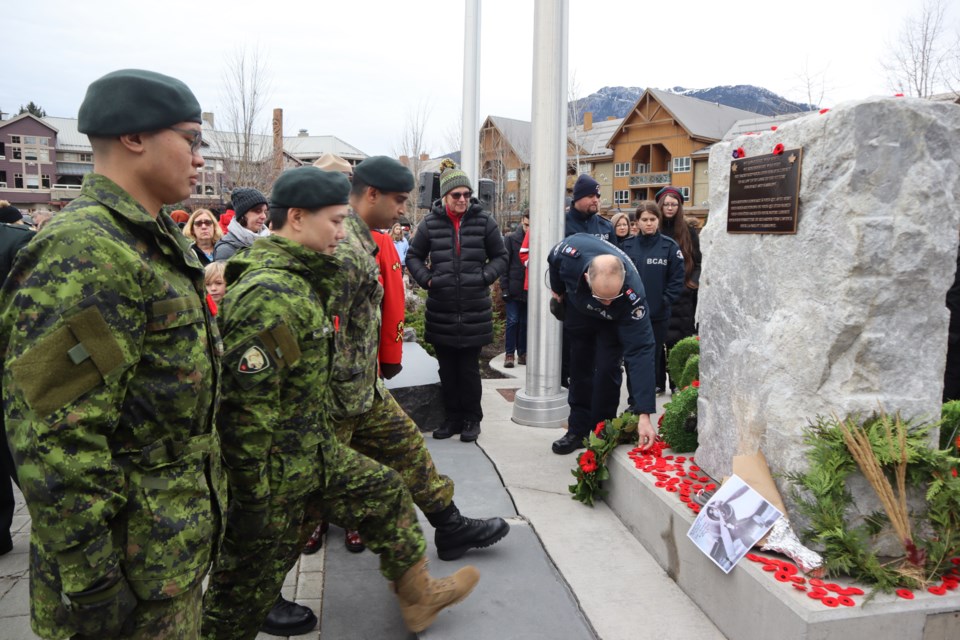Every year throughout Whistler, across B.C. and Canada people search their change purses (or this year tap their bankcards) to support the annual poppy campaign for Remembrance Day.
This year, this powerful blood-red symbol deserves its own moment of silence as it marks its 100th anniversary.
It started as a way to recognize those who served in the First World War, but across the decades it has come to symbolize all those lost who we remember and honour, as well as those who returned, many of whom suffer with injury and trauma forever.
“The poppy connects us to history as we bear witness to those who have fallen in service of this country, to those who returned from wars and missions wounded in body, mind and spirit, to those who demobilized or left the forces to contribute to their communities, and to those who continue to serve,” wrote Tim Cook, author of 12 books of Canadian military history and curator of the Canadian War Museum’s current exhibition, Forever Changed: Stories from the Second World War in the Globe and Mail recently.
“The poppy is pinned to our history, and for many Canadians it has always been a part of our lives.”
The First World War from 1914 to 1918 killed more than nine million soldiers in battle, and wounded more than 21 million. The loss is almost unimaginable. Canada lost some 66,000 Canadians to the war and another 172,000 suffered physical wounds.
Nearly everyone knows of the famous poem “In Flanders Fields,” by Canadian battlefield surgeon John McCrae, and that it is the inspiration of the poppy campaign run today by the Royal Canadian Legion.
According to Cook, the rise of the poppy as a symbol was not without controversy, as some regarded it as simply a weed or linked it to opium use. But in 1921, Cook explains, the Great War Veterans Association (GWVA), the largest of the many veterans’ groups to emerge in the Dominion after the war, adopted the poppy as a symbol of commemoration and it has been with us ever since.
Other countries also wear poppies as a symbol of remembrance, but their use is deeply Canadian, growing as they did out of McCrae’s poem.
I usually get a poppy as early as I can. For myself, and I imagine for countless millions, it is about more than just the day or the veterans and others lost, it’s a way to connect to my father who passed away some years ago at the age of 92. A Second World War pilot, he took his first solo flight Nov. 18, 1943 in a Fairchild Cornell—his logbook shows hours and hours of flying in half a dozen different types of planes including Corsairs and Tiger Moths. He was commended for his marksmanship. There were also two medals.
While he did not talk much about the war, his bittersweet memories of pranks played, a few too many drinks after a tough day and the loss of all but one of his five brothers to German pilot marksmanship stay with me, and I hope with my children too.
Lest we forget.
Canada, as a nation, has much to be proud of, though it was hard to feel that way this year as we came face to face with our own ability to be blind to the suffering of others, to be blind to the horrendous racism and cultural genocide that has marked our society for decades and blind to the ongoing systemic denials that permeate our government structures.
These are truths that my father would have been deeply ashamed of. He fought for a country that listened to its people, which honoured them and looked after them.
As I wear my poppy this year I will be thinking of Turtle Island and First Nations and the war they have been fighting right here, and I hope they will accept my pledge to honour their stories, to listen and believe and create change.
That is the type of country my father fought for.


